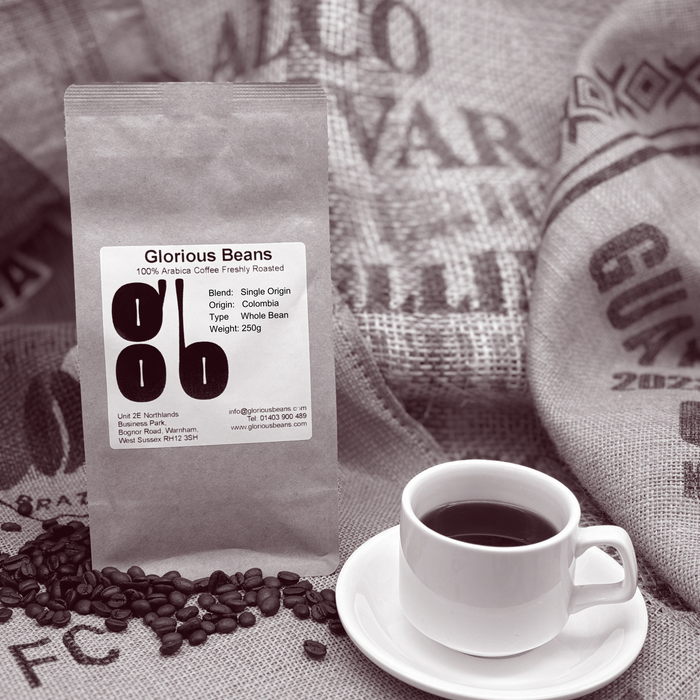How to Store SOE Single Origin Espresso for Maximum Freshness
How to Store SOE Single Origin Espresso for Maximum Freshness
Blog Article
Discovering the Abundant Tastes of Coffee Beans: a Deep Dive Into Coffee and Blended Coffee Beans
When you explore the abundant flavors of coffee beans, you discover an intricate globe where each variety brings its very own personality to your mug. As you browse through the art of coffee and the creative thinking behind mixed coffees, you'll begin to appreciate the subtleties that make each sip one-of-a-kind.
The Origins of Coffee Beans: Checking Out Terroir and Taste Profiles
When you take a sip of coffee, you're not simply appreciating a drink; you're experiencing an abundant tapestry of tastes shaped by the beans' origins. Each area produces special flavor accounts influenced by elevation, environment, and dirt. For instance, beans from Ethiopia frequently rupture with intense, fruity notes, while those from Colombia often tend to offer a balanced, nutty sweet taste.
As you discover various beginnings, you'll see exactly how terroir-- the ecological factors impacting a plant-- plays an important function - Single Origin Espresso. The same coffee selection can taste dramatically different depending upon where it's expanded
When you think about these aspects, you start to appreciate the complexity behind your mug. Each sip informs a tale of the land and the farmers that supported the beans. Following time you indulge, assume about the trip your coffee took before it reached your hands, and savor those complex tastes that mirror its origin.
Recognizing Espresso: The Art and Science Behind the Brew
When you consider espresso, it's not nearly the strong taste; it's also regarding the strategies that bring it to life. Recognizing exactly how various preparation techniques impact preference can change your brewing experience. Allow's explore the ins and outs of coffee prep work and discover the special taste accounts that make each cup unique.
Espresso Preparation Strategies
Coffee prep work is both an art and a scientific research, integrating accurate strategies with a deep understanding of coffee. To begin, you'll intend to choose high-quality, freshly roasted beans and grind them carefully for excellent extraction (Single Origin Espresso). The work dimension is essential; also rugged, and your coffee will certainly be weak, too fine, and it'll be bitter
The outcome ought to be a rich, luscious espresso with a stunning layer of crema on top. With technique, you'll grasp these strategies.
Flavor Accounts Described
The globe of coffee supplies an abundant tapestry of taste profiles that can boost your coffee experience. You'll notice a balance of level of acidity, sweet taste, and resentment when you take that first sip. Each espresso bean brings one-of-a-kind notes, from floral and fruity to nutty and chocolaty. Light roasts commonly showcase brilliant acidity and dynamic tastes, while dark roasts present much deeper, bolder tones.
A well-crafted mix could integrate the bright notes of an Ethiopian bean with the rich, chocolatey undertones of a Brazilian bean. Accept the journey of discovering coffee's diverse flavors, and you'll transform your coffee ritual into an interesting journey.
Processing Approaches: Exactly How They Influence Flavor and Fragrance
While it might seem that the origin of coffee beans is one of the most substantial aspect in determining their taste and aroma, the handling methods utilized post-harvest play a just as essential role. You'll discover that these methods can dramatically change the final preference account of your mug.
For circumstances, the washed procedure eliminates the fruit from the beans prior to fermentation, often causing a cleaner, brighter taste. The all-natural procedure leaves the fruit undamaged throughout drying out, resulting in a sweeter, fruitier account.
Other techniques, like honey processing, strike a balance, allowing some fruit mucilage to stay, providing a distinct intricacy.
Each handling strategy connects with the beans' integral qualities, improving or silencing certain tastes and scents. So, when you sip that coffee or combined coffee, keep in mind that the journey from cherry to mug is influenced not just by beginning but also by how those beans were processed.
Toasting Strategies: Unlocking the Full Prospective of Coffee Beans
Roasting techniques are necessary for exposing the full possibility of coffee beans, as they change raw, environment-friendly beans right into the aromatic, savory coffee you enjoy. The selection of toasting technique-- light, tool, or dark-- dramatically affects taste accounts. Light roasts preserve the beans' natural level of acidity and fruity notes, while medium roasts equilibrium sweetness and richness. Dark roasts, on the various other hand, stress vibrant, smoky flavors.
You can trying out toasting times and temperatures to locate your perfect brew. A slower roast at lower temperature levels enables intricate flavors to establish, while a quicker roast can intensify anger. Take note of the splits during roasting; the very first fracture indicates a light roast, while the second split signals a dark roast. By understanding these techniques, you'll disclose a globe of flavor, elevating your coffee experience to new heights. Delight in every sip, recognizing the treatment More Bonuses that went into your cup!
The Magic of Blended Coffee: Developing Special Flavor Experiences
Developing a special flavor experience with combined coffee can transform your early morning ritual right into an expedition of taste. By incorporating different beans from numerous regions, you can disclose a symphony of tastes that elevate your cup to brand-new elevations. Each blend deals an unique profile, balancing body, acidity, and sweet taste to develop something really special.
When you select a mix, you're not just choosing a coffee; you're selecting a journey throughout diverse landscapes and societies. Trying out different mixes allows you to find your individual favorites, whether you appreciate fruity notes or rich, chocolatey touches.

Sampling Notes: Recognizing the Nuances in Your Cup
As you drink your coffee, you might discover a spectrum of tastes dancing on your taste, each revealing the complexities of the beans. You might taste the intense level of acidity similar to citrus or the deep, abundant notes comparable to dark delicious chocolate. The sweetness could evoke honey or caramel, balancing the general account beautifully.
Pay interest to the body of the coffee-- does it really feel ventilated and light, or is it complete and luscious? The coating, also, supplies ideas; a remaining aftertaste might mean nuttiness or floral undertones.

Don't forget to explore the distinct qualities of different origins, as each region passes on distinct flavors - Single Origin Espresso. Ethiopian coffees usually existing fruity notes, while Colombian beans may showcase an extra rounded sweetness. By identifying these subtleties, you'll strengthen your admiration for each and every mug, raising your coffee experience to brand-new elevations

Brewing Methods: Taking Full Advantage Of Flavor Removal for each Bean
When you explore the various developing methods, you'll uncover that each method can considerably impact the taste profile of your coffee. From French press to pour-over, each approach extracts various compounds, enhancing or silencing particular notes. Using a French press permits oils to remain in the mixture, creating a richer preference, while pour-over emphasizes clearness and illumination.
Temperature and grind dimension likewise play vital roles. A coarser grind functions best for cold mixtures, while a great grind is excellent for espresso. Experimenting with water temperature level-- in between 195 ° F and 205 ° F-- can reveal concealed tastes, too.
Do not ignore steeping time; a fast removal can result in sour notes, while over-extraction might generate bitterness. By readjusting these variables, you can optimize taste extraction and genuinely boost your coffee experience. Enjoy the journey of uncovering what approach best fits your taste buds!
Regularly Asked Inquiries
What Is the Suitable Water Temperature Level for Brewing Coffee?
The optimal water temperature level for developing coffee's in between 195 ° F and 205 ° F. If you use water that's too hot, you'll over-extract flavors; as well cold, and you won't draw out enough. Continue Goal for that pleasant place for the very best brew!
Exactly How Does Work Dimension Impact Coffee Flavor?
Grind dimension considerably impacts coffee flavor. Finer grinds extract a lot more oils and tastes, leading to a bolder preference, while coarser grinds return a lighter flavor. Changing grind size helps you achieve your desired coffee profile.
Are There Health And Wellness Perks Surrounding Alcohol Consumption Coffee?

What Is the Distinction Between Arabica and Robusta Beans?
Arabica beans are smoother and sweeter, typically featuring fruity tastes, while robusta beans are more powerful with a bitter taste and higher caffeine web content. You'll observe these differences in aroma and developing experience.
Just How Can I Store Coffee Beans for Freshness?
To save coffee beans for quality, keep them in an airtight container, far from moisture, warmth, and light. If you only grind what you require right before developing., you'll preserve their flavor much longer.
Checking Out the Rich Tastes of Coffee Beans: a Deep Dive Into Espresso and Blended Coffee Beans.
When you explore the abundant flavors of coffee beans, you reveal a complicated world where each range brings its own personality to your cup.When you take a sip of coffee, you're not simply appreciating a drink; you're experiencing an abundant tapestry of flavors shaped by the beans' origins.Roasting strategies are necessary for revealing the complete potential of coffee beans, as they transform raw, eco-friendly beans into the aromatic, flavorful coffee you delight in.As you drink your coffee, you might discover a range of tastes dancing on your palate, each disclosing the intricacies of the beans.
Report this page